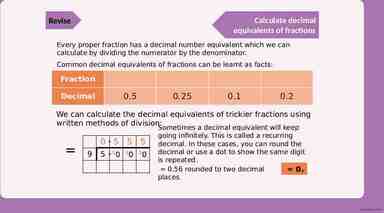INFORMATION SECURITY MANAGEMENT LECTURE 2: PLANNING FOR SECURITY
40 Slides2.36 MB

INFORMATION SECURITY MANAGEMENT LECTURE 2: PLANNING FOR SECURITY You got to be careful if you don’t know where you’re going, because you might not get there. – Yogi Berra

Outline and Review Introduction to Information Security CIA Triangle and Extensions Principles of Information Security Management Planning for Information Security

Principles of Information Security Mgmt Include the following characteristics that will be the focus of the current course (six P’s): 1. 2. 3. 4. 5. 6. Planning Chapters 2 & 3 Policy Programs Protection People Project Management http://csrc.nist.gov/publications/PubsTC.html

Information Security Planning Figure 2-1 Information Security and Planning Source: Course Technology/Cengage Learning

The Role of Planning Successful organizations utilize planning Planning involves – – – – – – – Employees Management Stockholders Other outside stakeholders The physical and technological environment The political and legal environment The competitive environment

The Role of Planning (cont’d.) Strategic planning includes: – – – – Vision statement Mission statement Strategy Coordinated plans for sub units

Precursors to Planning Values Statement Establishes organizational principles Vision Statement What the organization wants to become Mission Statement what the organization does and for whom The values, vision, and mission statements together provide the foundation for planning

Strategic Planning Strategy is the basis for long-term direction Strategic planning guides organizational efforts

Planning Levels Strategic goals are translated into tasks Objectives should be SMART Strategic planning then begins a transformation from general to specific objectives

Planning Levels (cont’d.) Strategic Planning Tactical Planning Operational Planning

Planning and the CISO Elements of a strategic plan – – – – – – – Executive summary Mission statement and vision statement Organizational profile and history Strategic issues and core values Program goals and objectives Management/operations goals and objectives Appendices (optional)

Information Security Governance Governance of information security is a strategic planning responsibility – Importance has grown in recent years Information security objectives must be addressed at the highest levels of an organization's management team – To be effective and offer a sustainable approach

Desired Outcomes Strategic alignment Risk management Resource management Performance measurement Value delivery

Implementing Information Security Governance Figure 2-6 General Governance Framework Source: IDEAL is a service mark of Carnegie Mellon University

Implementing Information Security Governance (cont’d.) Figure 2-7 The IDEAL model governance framework Source: IDEAL is a service mark of Carnegie Mellon University

GRC Article 1: Forrestor’s Framework Lines of Defense Stakeholder Contributions and Expectations

Planning for Information Security Implementation Source: Information Security Governance: A Call to Action

Planning For Information Security Implementation Implementation can begin – After plan has been translated into IT and information security objectives and tactical and operational plans Methods of implementation – Bottom-up – Top-down

Planning For Information Security Implementation (cont’d.) Source: Course Technology/Cengage learning

Article 3: Business Problem, not IT Drivers of Resolving Vulnerabilities CEO Questions about cyber risks

System Development Life Cycle A methodology for the design/implementation of an information system SecSDLC methodology is similar to SDLC

Security Systems Development Life Cycle Identification of specific threats and the risks they represent Design and implementation of specific controls to counter those threats and manage risks posed to the organization

SecSDLC: Investigation Phase begins with directive from management specifying the process, outcomes, and goals of the project and its budget Feasibility analysis Determines whether the organization has the resources and commitment to conduct a successful security analysis and design

SecSDLC: Analysis Prepare analysis of existing security policies and programs, along with known threats and current controls Analyze relevant legal issues that could affect the design of the security solution

SecSDLC: Analysis Prepare analysis of existing security policies and programs, along with known threats and current controls Analyze relevant legal issues that could affect the design of the security solution Table 2-1 Threats to Information Security

SecSDLC Analysis: Threats to Information Security Exploit Vulnerability Ex. Java Vulnerability Patch .and a week later Attack

SecSDLC Analysis: Common Attacks – – – – – – – Malicious code Hoaxes Back doors Password crack Brute force Dictionary Denial-of-service (DoS) and distributed denial-of-service (DDoS) – – – – – – – – Spoofing Man-in-the-middle Spam Mail bombing Sniffer Social engineering Buffer overflow Timing

SecSDLC Analysis: Risk Management Prioritize the risk posed by each category of threat Identify and assess the value of your information assets – Assign a comparative risk rating or score to each specific information asset

SecSDLC: Design Design in the SecSDLC – Create and develop a blueprint for security – Examine and implement key policies – Evaluate the technology needed to support the security blueprint – Generate alternative solutions – Agree upon a final design Security models may be used to guide the design process

SecSDLC: Design A critical design element of the information security program is the information security policy Management must define the types of security policy Integral part of design: SETA program – Consists of: Security education, security training, and security awareness – Purpose: enhance security

SecSDLC: Design Design controls and safeguards – Used to protect information from attacks by threats Design controls and safeguards (Categories): 1. Managerial controls 2. Operational controls 3. Technical controls

SecSDLC: Design

SecSDLC: Design Contingency planning (Chapter 3) – Prepare, react and recover from circumstances that threaten the organization Types of contingency planning – Incident response planning (IRP) – Disaster recovery planning (DRP) – Business continuity planning (BCP)

SecSDLC: Design Physical security – Design, implementation, and maintenance of countermeasures that protect the physical resources of an organization Physical resources include – People – Hardware – Supporting information system elements

SecSDLC: Implementation Security solutions are acquired, tested, implemented, and tested again Personnel issues are evaluated and specific training and education programs conducted

SecSDLC: Maintenance Once program is implemented, it must be: Operated Properly managed Timely (i.e. up to date using established procedures) If the program is not adjusting adequately to the changes in the internal or external environment, it may be necessary to begin the cycle again

SecSDLC: Maintenance Aspects of a maintenance model – – – – – – External monitoring Internal monitoring Planning and risk assessment Vulnerability assessment and remediation Readiness and review Vulnerability assessment Figure 2-11 Maintenance model

SecSDLC: Maintenance Security program management (Chapter 6) – A formal management standard can provide some insight into the processes and procedures needed – Examples include the BS7799 / ISO17799 / ISO27xxx model or the NIST models described earlier

Article 2: Dealing with GRC GRC in an increasingly complex, informationcentric world Challenges Suggestions Building a GRC Platform

Summary Information security governance Planning for information security implementation Introduction to the security systems development life cycle






